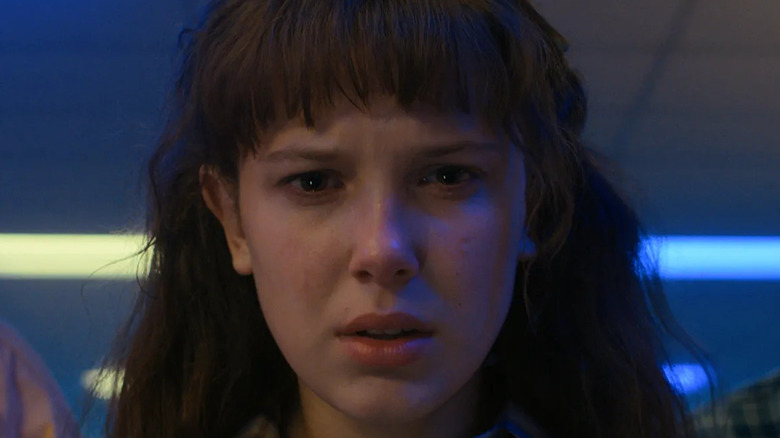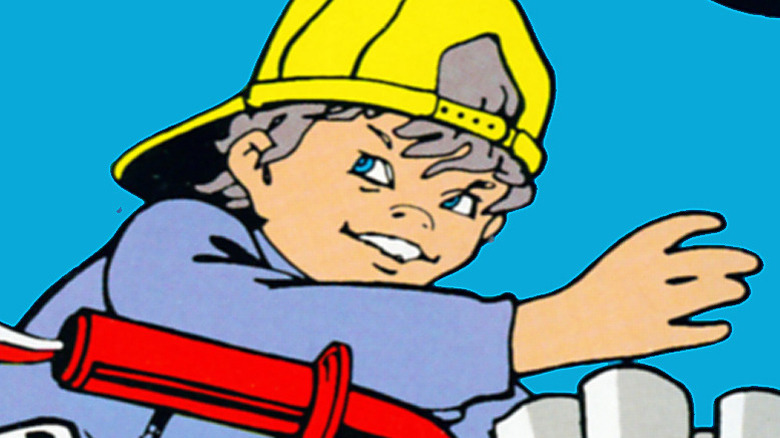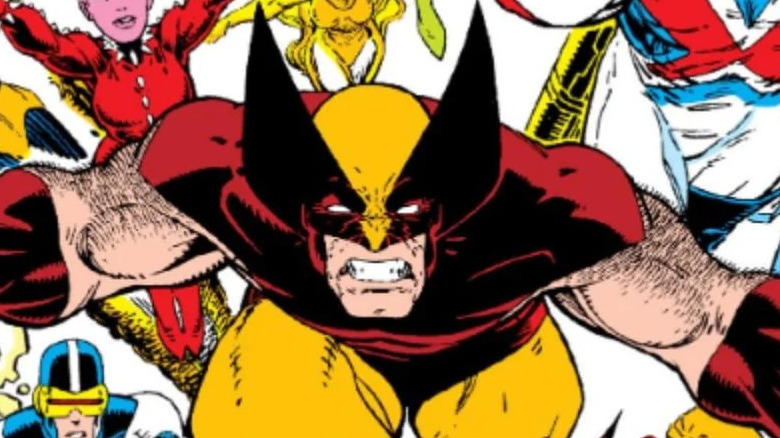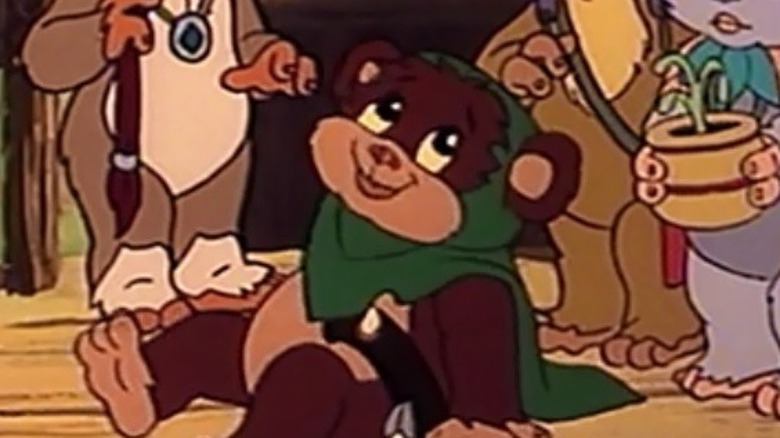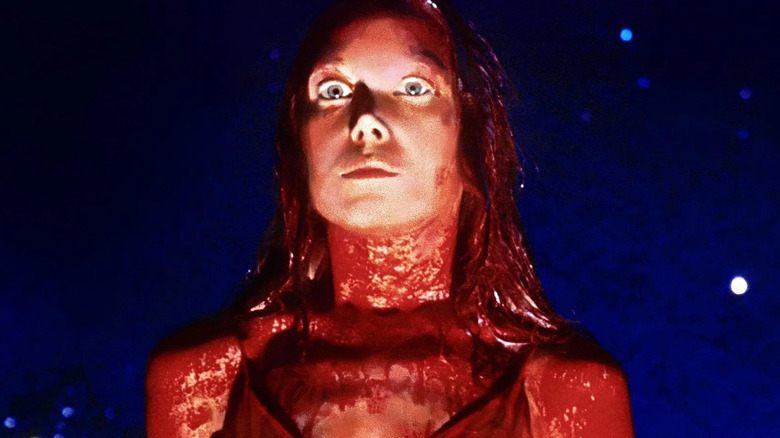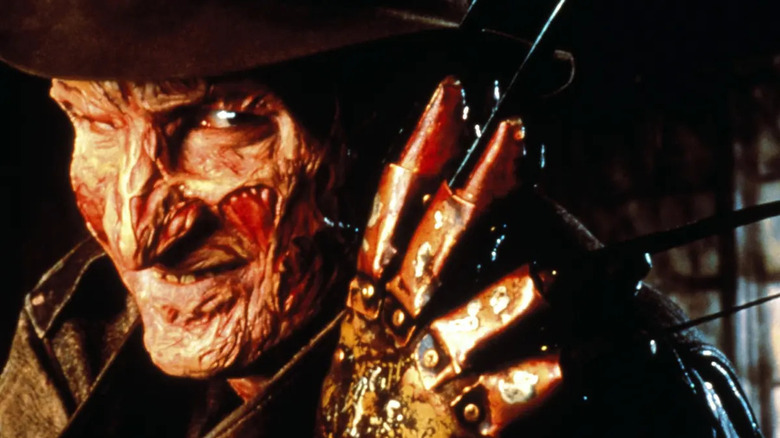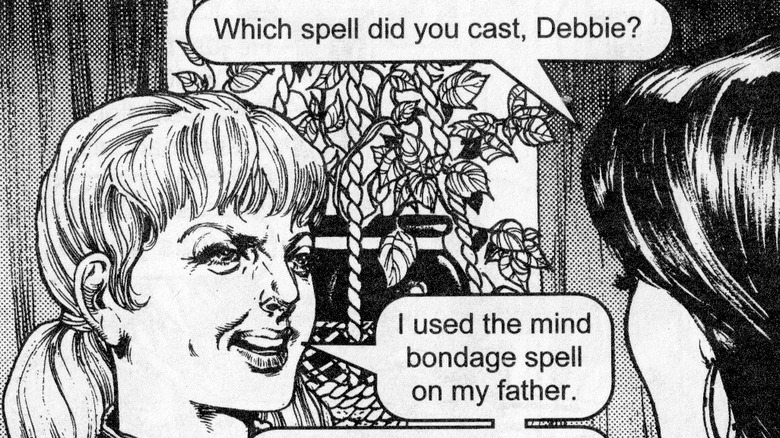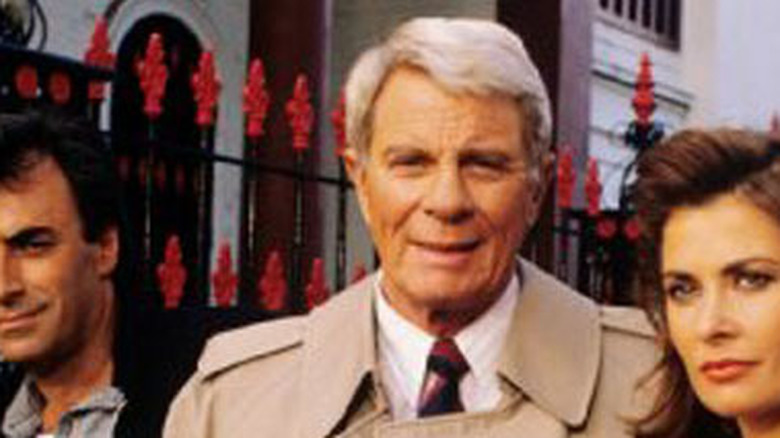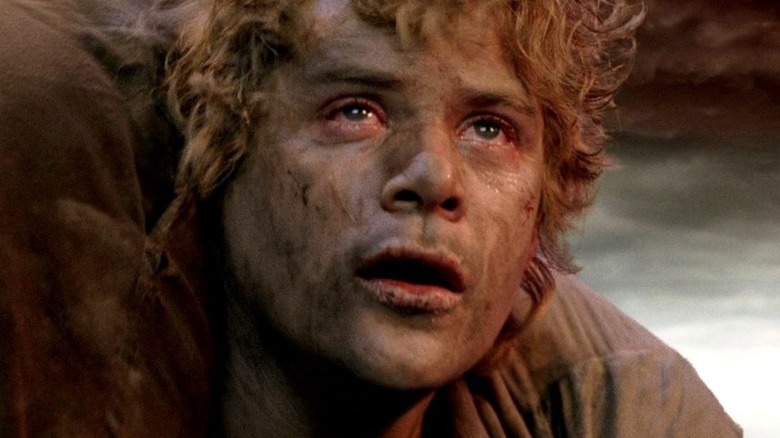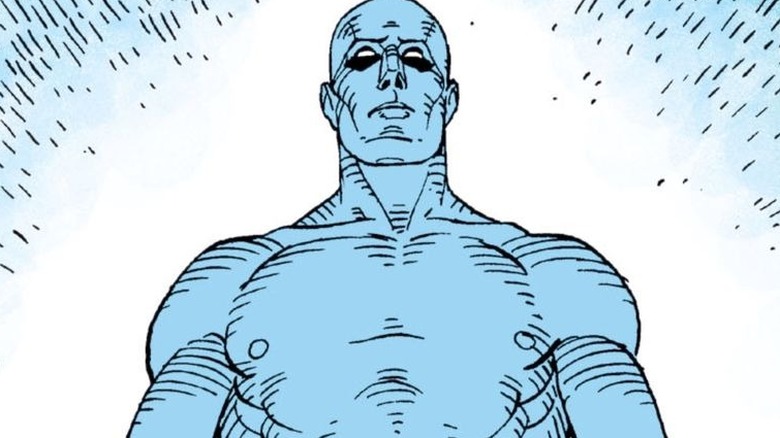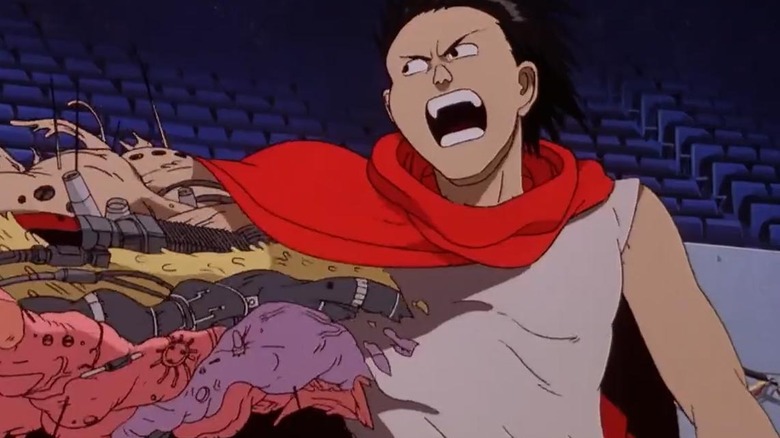Easter Eggs You Missed In Stranger Things Season 4 Part 1
The fourth, and penultimate, season of the popular sci-fi series "Stranger Things" is now out on Netflix. The show, created by The Duffer Brothers, is known for many things. For one, it made stars out of its child cast, such as Millie Bobbie Brown ("Godzilla vs. Kong") and Finn Wolfhard ("Ghostbusters: Afterlife"), as well as revitalizing the careers of Winona Ryder, David Harbour, and Matthew Modine. The show is also known for its well-calibrated (though not flawless) mish-mash of disparate tones and influences — from its cool, mind-bending sci-fi concepts, to its Stephen King-inspired horror sequences, to its cute and charming coming-of-age stories, and — of course — its retro '80s setting.
In fact, the '80s in general fuels a lot of its influences and references, which includes its style, aesthetics, politics, and even the stories and movies it draws on for inspiration. This also means the show is littered with fun little Easter Eggs, such as pop-culture references, decade-specific cultural signifiers, to even tonal and story beats that aren't always so obvious or easily spotted.
(WARNING: spoilers for season 4 of "Stranger Things" ahead...so be warned!)
Paperboy
In the opening scene of the "Stranger Things" Season 4 premiere, there is an extended sequence of a rambunctious paperboy throwing a bunch of rolled-up newspapers haphazardly at suburban houses. It hits random parts of the yards, including the back of a car, a window, and a chair.
This could be a reference to the Midway arcade game, the self-explanatory "Paperboy." It came out in 1985, a year before the fourth season of "Stranger Things" takes place. In fact, "Paperboy" came out for home consoles, such as the Nintendo Entertainment System (or NES), a year later in 1986, which fits with the season (even if the scene itself takes place before the actual season proper).
In the game, you would play as the titular "Paperboy" and attempt to throw your newspaper rolls to the designated houses — the closer to the house, the higher your score (though you would still get points if it didn't land exactly at their doorstep, including if you broke their windows). Meanwhile, the player would also have to dodge obstacles, such as cars, other people, and even creatures grabbing at you from the sewers.
This could all be a coincidence, of course, but the fact that video games (especially the aforementioned NES) are a plot point in a later episode, as well as the creatures you have to avoid in the game (similar to the creatures that are stalking Hawkins), it seems likely the reference is intentional.
X-Men
There are a ton of references to Marvel's "X-Men" throughout the fourth season of "Stranger Things." This makes a lot of sense (and isn't the first time the show has referenced the popular mutant superhero team), as Millie Bobby Brown's Eleven is often compared to a superhero, and her experimentation is reminiscent of some "X-Men" arcs (such as Chris Claremont's "God Loves, Man Kills"). Furthermore, the "X-Men" comics were increasing in popularity in the '80s, with many of their most popular arcs, like the aforementioned "Man Kills" and "The Phoenix Saga" released during that time.
As for the references themselves, there's the fact that the "Dungeons & Dragons" club, led by new character Eddie (Joseph Quinn), that Mike (Finn Wolfhard) and Dustin (Gaten Matarazzo) have joined in-between seasons, is called "The Hellfire Club," a probable reference to a villainous group of mutants in the X-Men universe.
Other than that, Dustin also makes a direct reference to Cerebro — a telepath amplifier in the "X-Men" comics, usually employed by Professor Xavier to find other mutants. It's the name Dustin gives to an improvised computer set-up he made to track down and help his friend Eddie, who has gone on the run for a murder he didn't commit.
Finally, there's the NINA project, which is a top-secret machine Eleven is put inside, so she can regain — as well as amplify — her powers, reminiscent in look and function to Cerebro.
Star Wars
"Star Wars" is perhaps the most popular geek property in the world. While it seems ubiquitous now — particularly with all the Disney+ shows — it was similarly inescapable in the first half of the '80s, particularly right after the release of the original trilogy.
There is a lot of ancillary material that existed during this time between the original trilogy and the prequel trilogy (and often predating the Extended Universe — now "Legends" — canon). This includes kid-targeted cartoons based on C-3PO and R2-D2 (called "Droids), as well as TV movies and an animated series about the Ewoks. In fact, sharp=eyed viewers can spot Jonathan Byers (Charlie Heaton) watching a snippet of the aforementioned "Ewoks" cartoon in the third episode of the fourth season.
Also, two episodes earlier, Dustin tries to put on his best Han Solo impression when telling his friends "Never tell me the odds," a quote from "The Empire Strikes Back."
Carrie
One of the most overt references in Season 4 is "Carrie" — both the 1974 horror novel by Stephen King (an overall major influence on the of the show in general), as well as the 1976 Brian De Palma film starring Sissy Spacek. This is because, at the beginning of the season, Will (Noah Schnapp) and Eleven are now living in California, with Eleven struggling to fit in. This is the first time she's ever been educated in a public setting, rather than being home-schooled by Hopper (David Harbour) or in a secret experimental lab.
Matters get worse, however, when she runs afoul of valley girl queen bee Angela, played by Elodie Grace Orkin. Angela and her posse relentlessly bully Eleven (now going by her birth name "Jane"), which — given Eleven's latent telekinetic powers, makes the parallels between Eleven and Carrie all the more explicit.
When she gets bullied at a roller rink, one of the bullies even pours a milkshake all over her, in a scene directly calling back to the image of Carrie (Sissy Spacek) doused in pig's blood. However, the climax of the "Stranger Things" plotline — where she doesn't go on a telekinetic rampage — seems to be a purposeful inversion by the Duffers. There is even a fake out where Eleven (as Jane) attempts to attack her bullies with her powers but can't, because she no longer has them; the audience also sees flashbacks of a massacre she supposedly performed as a little girl.
A Nightmare on Elm Street
Wes Craven's "A Nightmare on Elm Street" from 1984 is a classic horror film for a reason. It starred Robert Englund as Freddy Krueger, the iconic knife-fingered, hat and sweater-wearing child killer, who was killed in an act of vigilante justice and came back as a dream demon murdering his killer's children. While ostensibly a slasher film, it is elevated by Englund's committed performance, Craven's dream-like direction, and the cool, gory kills.
Season 4 of "Stranger Things" revels in "A Nightmare on Elm Street" references. The entire plot of the villain is invading the dreams of teens, and using their fears and anxieties in their thoughts to kill them in real life. Even the bloody deaths of his victims floating in the air is reminiscent of the first death in the original "Nightmare" film, as well as the plot about a perceived troublemaker being framed for the murder.
However, the main Easter egg is The Duffer Brothers casting Englund in the series. He plays Victor Creel, framed for the murder of the villain in the '50s. He puts in a great performance, even if it's a more sympathetic one rather than the villainous work you might expect.
Dark Dungeons by Jack Chick
The popular tabletop role-playing game "Dungeons and Dragons" (or "D&D") has always been a big part of "Stranger Things." In fact, the pilot episode opens with the main quartet — Mike, Dustin, Lucas (Caleb McLaughlin), and Will — playing the aforementioned RPG. It even plays a pivotal role in the characters defeating the villains of the "Upside Down" throughout the series. This include helping them understand the fourth season's new villain, which they've dubbed Vecna, based on a wizard who harnesses the powers of a dark realm.
However, being set in the '80s, it means that the show is finally tackling the "Satanic Panic" of the era. During this time, certain activities — like playing "Dungeons and Dragons" – were considered legitimately evil in a supernatural sense. This was spurred on by a growing Evangelical movement during the conservative Reagan administration.
The artist Jack Chick, of the infamous "Chick tracts" comics, was an acolyte of both extreme Evangelicalism and conservatism, and immediately jumped on the anti-"D&D" bandwagon. He wrote and drew the strip "Dark Dungeons," where a girl uses spells she learned from "D&D" to control people.
In Episode 2 of Season 4, basketball star Jason (Mason Dye) — whose girlfriend Eddie was framed for killing — retells nearly the same hypothetical about why Eddie (a known "D&D" player) is dangerous.
Mission: Impossible
At the end of Season 3 of "Stranger Things," viewers saw Hopper get blown up during the last episode, sacrificing himself in an attempt to stop the encroaching Upside Down. However, they got a tantalizing after credits scene (because even shows are doing that now) of him alive — though maybe not well — in a Russian prison.
This means that Season 4 deals with Joyce (Winona Ryder) and Murray (Brett Gelman) attempting to find and rescue Hopper from the Soviet Union. This is set in motion when they find what looks like a ransom note and a phone number to call. When they dial the number, they get in touch with a Russian who claims he can get Hopper to safety — for a price.
However, when Joyce initially calls the number, the dialed numbers play out the notes to the original "Mission: Impossible" theme. For those unaware, the "Mission: Impossible" series starring Tom Cruise is an adaptation of the Cold War-era TV series from the '60s starring Peter Graves (perhaps most famous for playing the pilot in "Airplane!") There was even an ill-fated reboot in the '80s, the decade "Stranger Things" is set.
This also alludes to the ensuing plot, as Joyce and Murray have to deal with spies, double-crosses, and even the use of disguises (a common plot point in the "M:I" TV series and movies).
Lord of the Rings
Aside from "Star Wars," "The Lord of the Rings" might be the biggest nerd property on the planet. Written by English professor and linguist J.R.R. Tolkien, the "Lord of the Rings" trilogy of books — sequels to the classic children's novel "The Hobbit" — is about a group of fantasy races (i.e. dwarves, elves, and the aforementioned hobbits), as well as humans and wizards, sent on a quest to destroy a magical ring so an evil warlord named Sauron can't use it to control the world.
The backbone of all modern fantasy stories, even "Stranger Things" owes a lot to Tolkien.
So, during the penultimate episode of Season 4, it's no surprise when Eddie compares the mission to stop Vecna with stepping into Mordor to stop Sauron. While they spout off quotes and character names, it comes into clear focus later how similar the Upside Down actually looks to Mordor (especially the Peter Jackson live-action versions). Eddie also mentions "the Burning of the Shire," which isn't in the films (it happens after the Sauron is defeated), and is in reference to the wholesome town of Hawkins succumbing to hate and fear, as well as the supernatural threat of the Upside Down.
Watchmen
The Grandfather clock motif throughout the fourth season of "Stranger Things" seems out of place at first glance. Eventually, it is made clear that such references are to the original Creel house, where One first realized his latent — and devastating — psychic powers.
However, more than that, this is a reference to Doctor Manhattan from the classic graphic novel "Watchmen" by Alan Moore and Dave Gibbons. In it, the scientist Jonathan Osterman is put into a particle accelerator and ripped apart into atoms ... but eventually reconstructs himself into the aforementioned all-powerful superhero.
In the comics, Osterman's father was a watchmaker, and it is heavily implied that his father's tutelage gave Jonathan the knowledge of how things are put together, and is what helped him reconstruct himself after being split apart. This becomes more clear when the "Stranger Things" audience realizes that as One describes his backstory to Eleven and Nancy, it is during a montage scored by Philip Glass' "Pruit Igoe and Prophecies" — the same song Zack Snyder used in his 2009 "Watchmen" feature film adaptation. This means that the clock is a reference to both Doctor Manhattan (as One seems to be an evil version of the character, with a similar origin) ... but also, to the Doomsday Clock referenced throughout the comic.
Further evidence includes the 1986 comic's date of publish (though the story is set in an alternate 1985) — the same year Season 4 takes place.
Akira
Though the seminal dystopian sci-fi anime feature "Akira" didn't come out until 1988 — two years after the fourth season of "Stranger Things" is set — the manga that the anime was adapted from initially came out in 1982. Much like the tale of Eleven, the "Akira" story focuses on a group of children with latent psychic abilities being controlled, monitored, and experimented on by a corrupt government agent. That is, until one of the children — Tetsuo — escapes and wrecks havoc on New Tokyo.
Tetsuo eventually is overcome by his abilities, becoming horribly disfigured.
This is very similar to the fate of One, who tricked Eleven into freeing him. This includes the disfigurement, with the tentacles being similar to the veiny, tentacled hand of Tetsuo during the climax of "Akira."
As well, One has a very "anime" look, with his hair (though blonde) styled in a way similar to Tetsuo, as well as his face being lit in a way that makes his facial features reminiscent of the character. Even the final disintegration (in the show, initiated by Eleven) has visual similarities to shots from the classic anime and manga.
